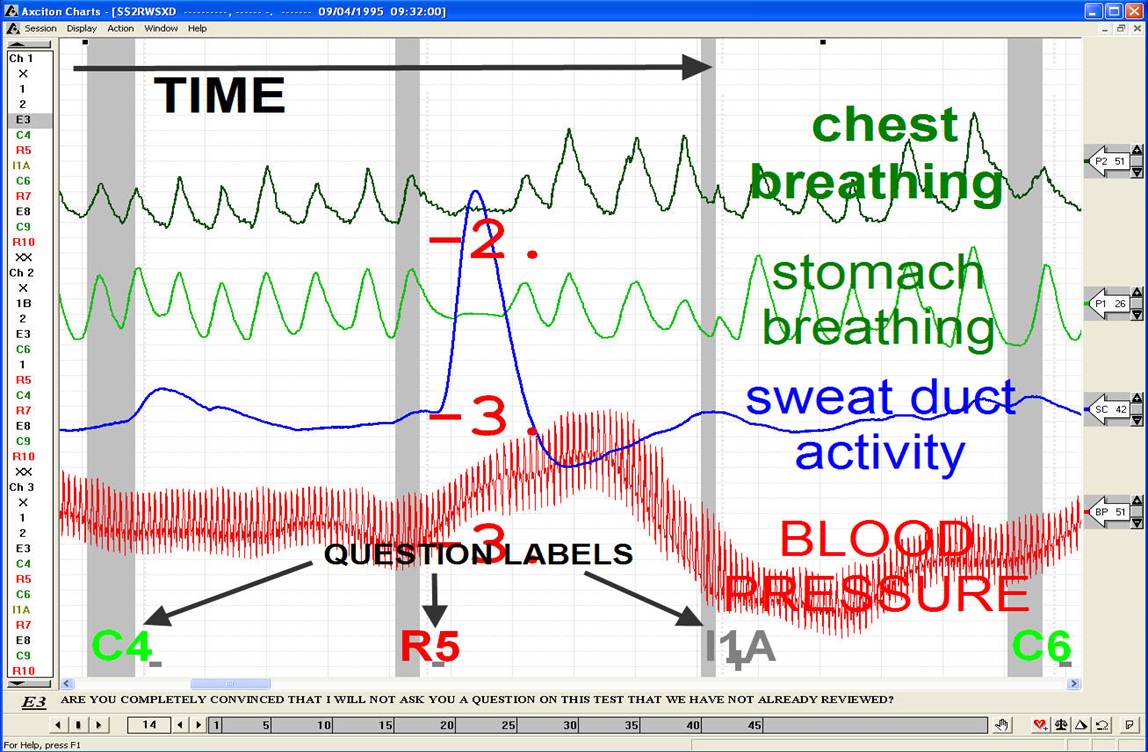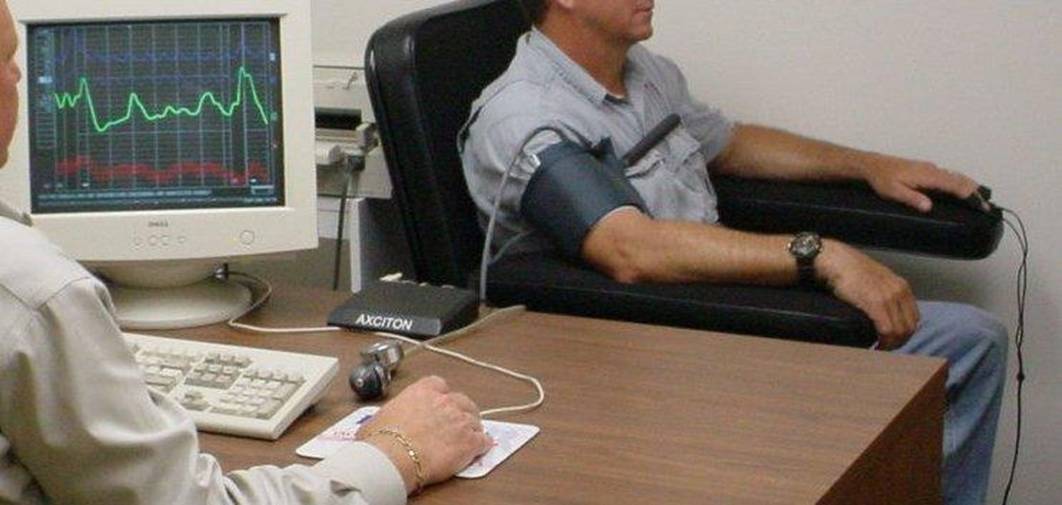|
|
|
| |
What is a polygraph? |
| |
|
| |
Polygraph is the field of forensic science that is able to identify truthful or deceptive answers to questions, by observing a subjects cardio, sweat glands, and breathing reactions when carefully designed questions are asked by a trained polygraph examiner to a tested subject.
A polygraph exam is often called a lie detection exam, and takes about one to two hours to be done properly with high accuracy.
To describe the theory behind a polygraph exam we will describe several concepts.
|
|
| |
 |
|
| |
First: All humans have an Autonomic nervous system that allows their bodies organs to be separately stimulated (sympathetic), or relaxed (parasympathetic), (see above), to meet the demands of life and survival. One such autonomic response is the response to fear. When a person lies, they are afraid of being caught in a lie, and they respond with generally increased heart rate, sweating, and complexly suppressed breathing, that are collectively markers for fear and stress.
Second: A trained examiner can carefully design questions that manipulate a subject’s autonomic fear response to questions on the central issue to be tested for, and other emotional reference points. For accuracy, this process is repeated numerous times and the different questions stress-fear value for each category are combined and compared with each other category to determine the deception or truthfulness of a subject to the test issue. The process of ‘reading’ a polygraph chart is a well defined science, but requires formal training from a polygraph school.
Next we will describe what polygraph data looks like:
|
|
| |
 |
|
| |
Shown above is a typical Axciton Polygraph computer screen during a polygraph exam.
The Axciton polygraph data flows to the left, with the right side of the computer display being more recent.
The Axciton polygraph measures chest breathing at the top, followed by stomach breathing, then electrical conductivity of the sweat gland, and then blood pressure.
In addition, most Axciton polygraphs also have a fifth channel that measures subject movement (not shown here).
Each polygraph question asked is represented by a question label, as shown above.
The Axciton polygraph has an optional hand score number that appears on the screen to assist Axciton examiners in scoring their chart.
Typically a polygraph chart will be recording data from 5 to 9 minutes depending on the style of question formats selected by an examiner.
After all Axciton chart data is recorded, the Axciton polygraph examiner will analyze the chart mathematically, as taught in a polygraph school, and make a determination of a subjects truthfulness. Usually the Axciton polygraph examiner will then discuss his polygraph truthfulness determination with the test subject, and allow the subject to explain his reactions.
In summary, the polygraph exam has 3 separate phases.
The Pre-exam: where the Axciton polygraph examiner discusses the test issues with the subject to best determine how to phrase the questions.
The exam itself: Where the Axciton polygraph chart records a subjects autonomic reactions to the questions asked.
The Post exam: Where the Examiner discusses the results of the Axciton polygraph exam with the subject.
After the exam is over, the Polygraph examiner will typically write a report of some sort, to be delivered to the paying client, or other parties.
This concludes a very basic description as to what polygraph is, and how it works.
|
|
| |
 |
|
| |
|
|
| |
|
|
|
| |
| © 2006, Axciton Systems, Inc. |
|
|
|



